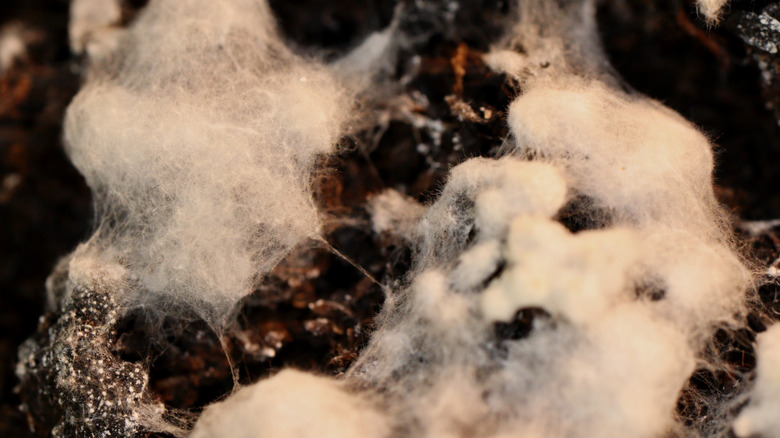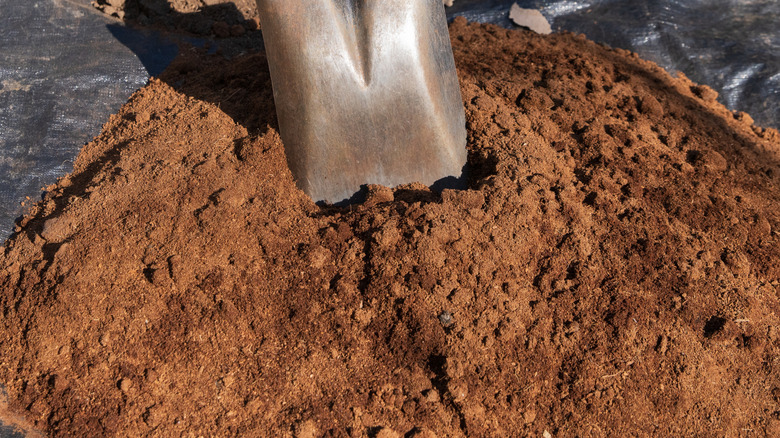How To Rescue Moldy Potting Soil (And When It's Not Worth It)
Potting soil is a key ingredient for growing healthy plants, both indoors and out. So, if you see a bargain at the store or nursery, it's tempting to buy in bulk; but don't be too extravagant. What many people don't realize is that potting soil eventually breaks down, and after 6 to 12 months, it begins to lose its nutrients. The other common problem, particularly with opened bags of potting soil, is that if they're not stored properly, mold can start to grow in them.
Before you act, it's important to identify what you're dealing with. Those little white specks in potting soil that you've been wondering about might actually be valuable additions of one kind or another. By contrast, mold will be white and fluffy, usually staying on the surface. In most cases, the mold is harmless, but on occasion, it might make the plant vulnerable to disease and deprive it of nutrients.
There are two main ways to rescue moldy potting soil. If you're only seeing small patches, you can simply scrape them off with a trowel. If it's a larger area, spread the potting mix across a tarp and leave it in full sun. After a couple of days, the mold will dry out and the spores will die. By the way, Although there are difference between potting soil and potting mix, both can be prone to mold, so treat both the same way.
With mold and potting soil, prevention is better than cure
There are several pro tips for reusing potting soil, but sometimes it's beyond saving. After about 12 months, it will likely be stale. While some people suggest mixing in some fresh potting soil to revive it, that's a bit like throwing good after bad. Insect infestations aren't unknown. You can try sieving the soil to separate them out, but that can be very labor intensive and pretty unpleasant, so it might be easier to wrap the bag up and throw it in the trash. Finally, if it smells bad (typically of rotten eggs) there are bacteria in there that you don't want to spread among your plants. There's nothing you can do about it, so potting soil like this definitely has to go.
Overall, preventing mold in potting soil is better than trying to eliminate it. Mold usually develops in soil because of excess moisture and high humidity. It shouldn't happen with unopened bags, unless they have been punctured, but an open bag in a shed can be the perfect environment for mold to start. Where possible, store the potting soil in a place that's cool and dry. A large airtight container is ideal. Alternatively, seal the bag back up again with duct tape, then put that in a heavy-duty plastic garbage bag.

